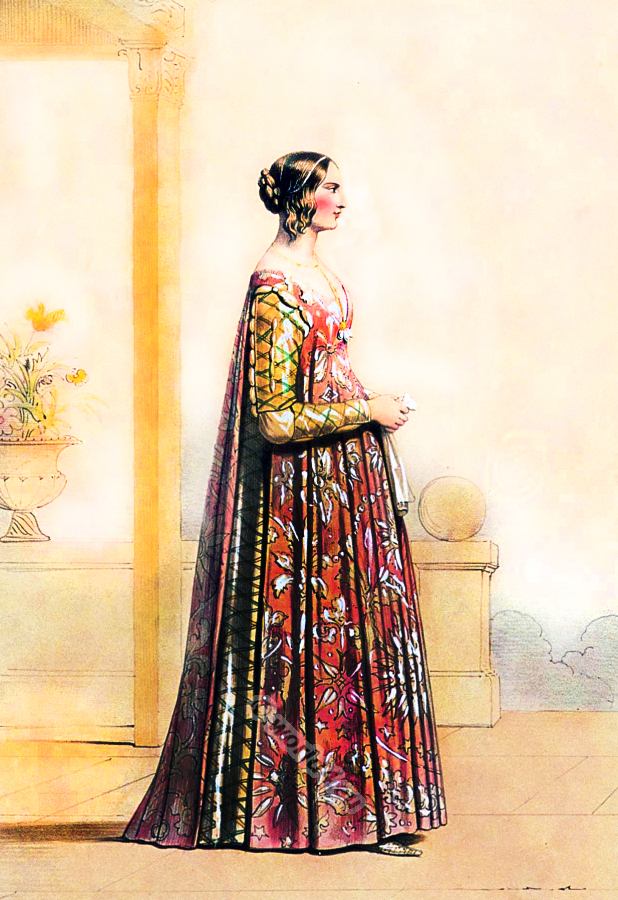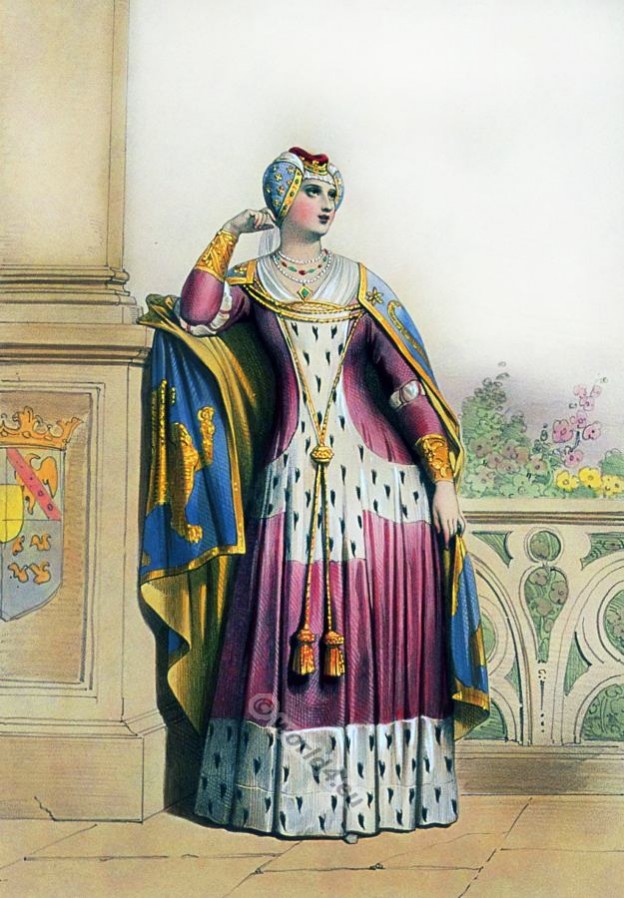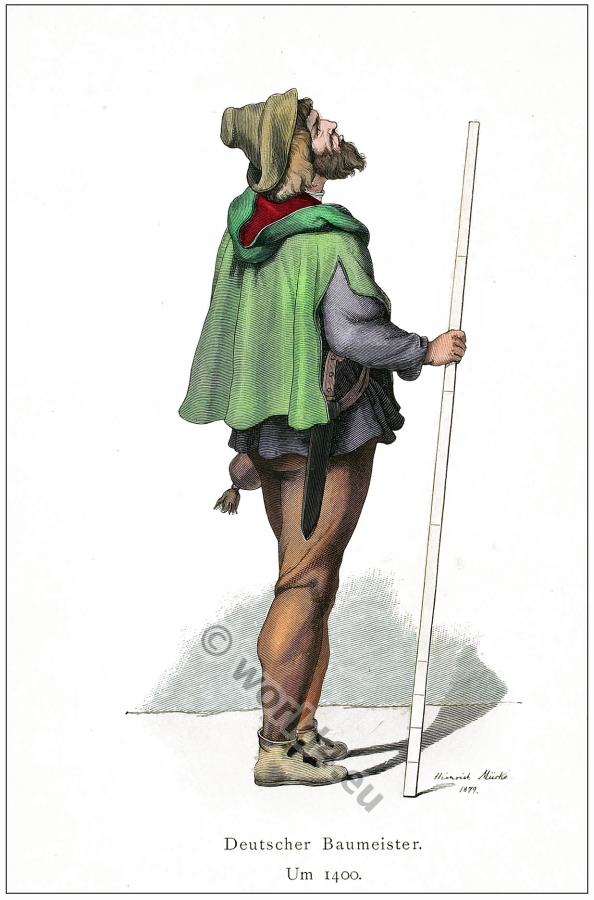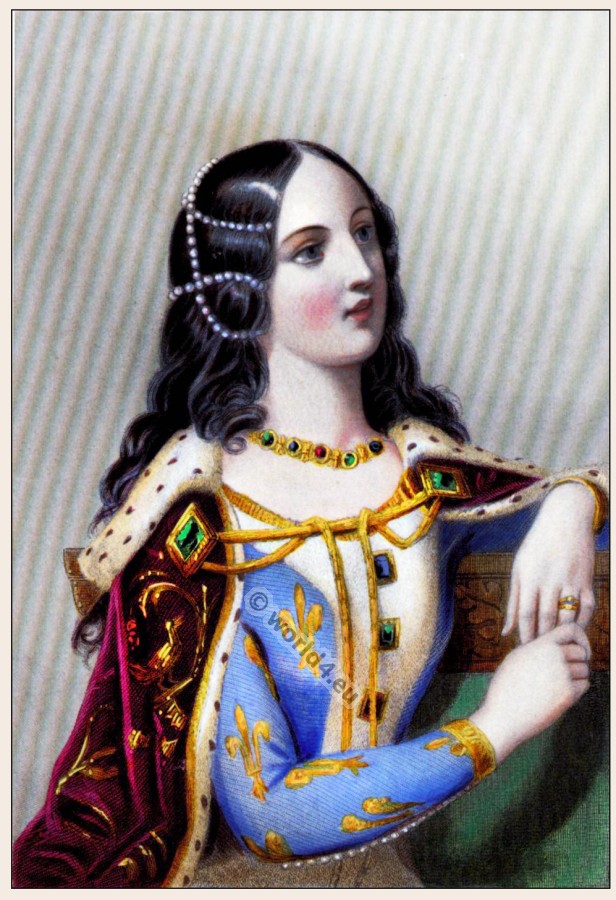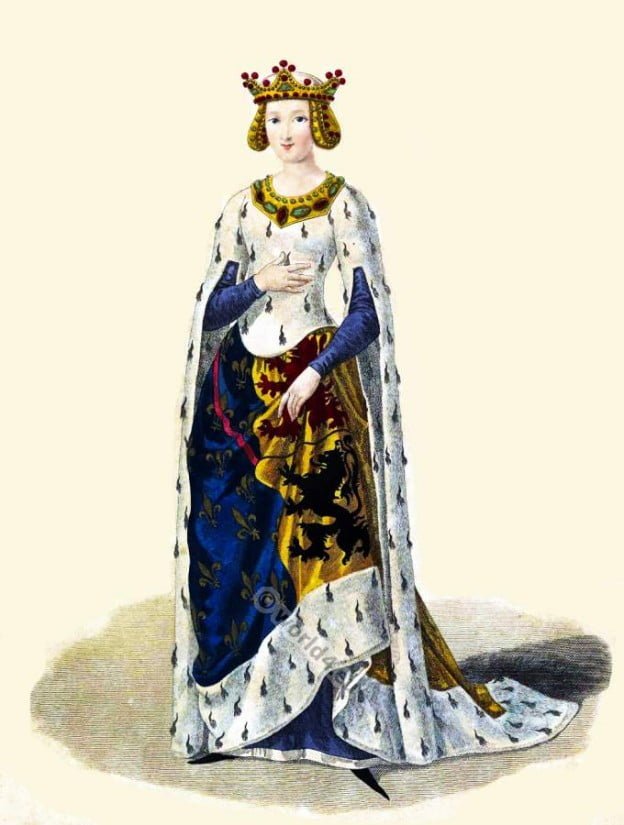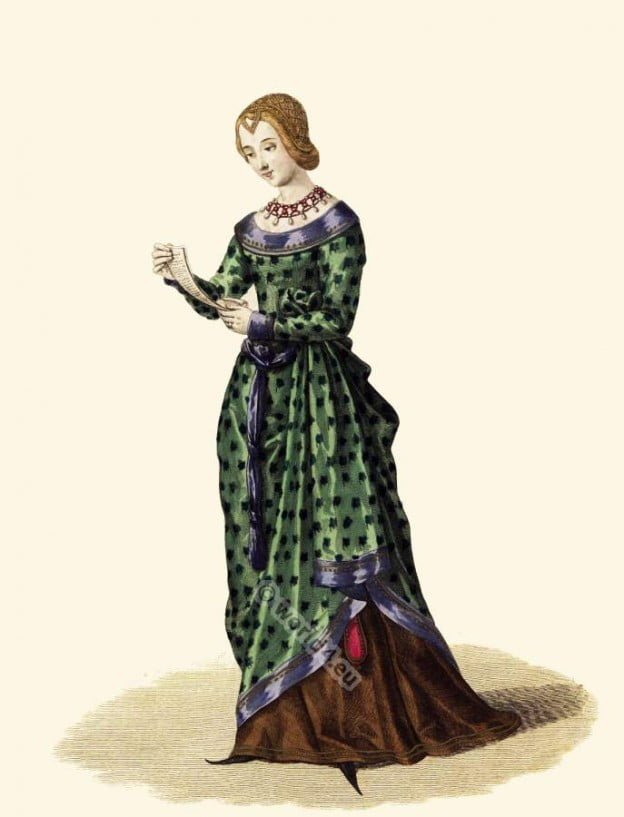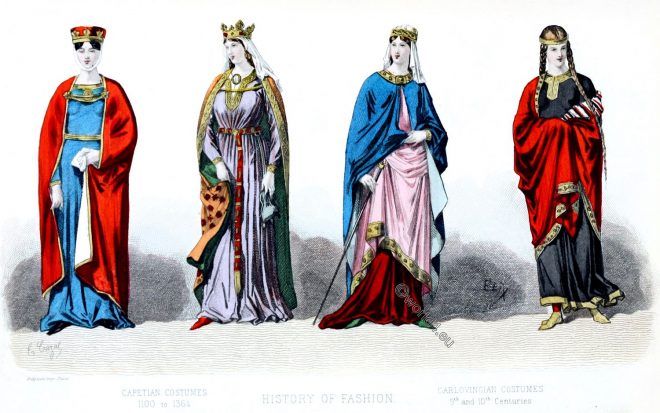Noble Allemand au XIV. Siècle. Costumes historiques de ville par Achille Devéria
Category: 14th Century
Fashion and Costumes during the 14th century.
Moda Rinascimento italiano nel 14 ° secolo.
Renaissance. Moda Rinascimento italiano nel 14 ° secolo.
English court lady in 14th century. Dame Anglaise au XIV Siècle.
Court lady. Reign of King Edward III. England. Fashion history of the Middle Ages.
Chapeaux. Les modes du Moyen Age. Costume féminin français.
L’histoire du costume féminin français. Les modes du Moyen Age, de l’an 1037 à l’an 1461. Chapeaux. Escoffion, Chapeau breton, Collier, Hénin, Banniere des Chapeliers, Chapeau d’élégante.
German medieval architect in 14th Century
German medieval architect in 14th Century. German craftsman costume. The German master builder were also associated with the Freemasons. Medieval Burgundian fashion period, late gothic dress..
Isabeau de Bavière and her daughter Isabelle de Valois.
Isabeau de Bavière (1370-1435) was the wife of Charles VI. The daughter Isabelle de Valois (1389-1409) was the third child and second daughter whom survived to adulthood.
Marie of Hainaut, Duchess of Bourbon
Marie de Hainaut, also known as Marie d’Avesnes, Duchess of Bourbon was the wife of Louis I of Bourbon.
Laura de Noves, or also called Laure de Sade 1310-1348.
Laura de Noves, or also called Laure de Sade (1310 – 1348). Her son Hugues III was ancestor of the later Marquis de Sade.
French fashion history. Middle Ages. 1422 to 1483.
French fashion history. Middle Ages. 1422 to 1483. Reign of Charles VI, called the Beloved (French: le Bien-Aimé), Charles VII, called the Victorious (French: le Victorieux) and Louis XI. called “Louis the Prudent” (French: le Prudent).
The Carolingian fashion period 752-987. Reign of Charlemagne.
Reign of Charlemagne – The women of the tenth century wear two tunics – Judith’s belt – A veil is obligatory – Miniatures in the Mazarin Library- Charles the Bald’s Bible Shoes – Dress of Queen Lutgarde – Dress of Rotrude and Bertha – Gisla and other kings women of the Emperor – The Successors of Charlemagne – Cannes – Adelaide of Vermandois – The dress of widows.


